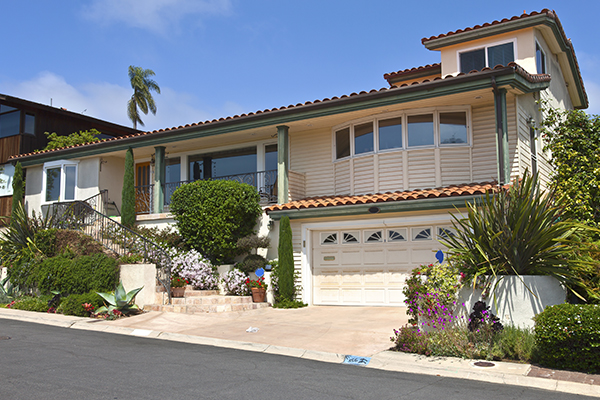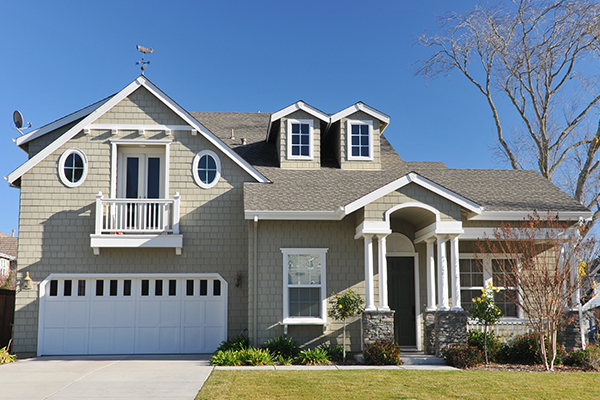What are soft-story homes?
Driving through almost any Golden State neighborhood, you will notice what are called soft-story homes. These home construction types feature one or more floors of living space built above an attached garage and the ground floors. The living space above the garage often includes large windows and is typically used as a bedroom, office or playroom. Despite their popularity, these soft-story structures can be vulnerable to damage because they may not be able to withstand the lateral movement from earthquake shaking.
What is a soft-story retrofit?
The good news? There are soft-story retrofit solutions. Simply put, a soft-story earthquake retrofit strengthens part of the ground floor of the house so the existing structure can better withstand the side to side shaking that occurs during an earthquake.
What’s more, making a soft-story home more resistant to earthquake damage can be fairly straightforward by installing new plywood sheathing or steel reinforcements on each side of the garage door. (Some garage doors require a steel frame to be adequately retrofitted.) For additional reinforcement, bracing of the home’s studs can be attained by attaching a sheathing board, which, in effect, creates a plywood shear wall to further strengthen large openings on the ground floor.
Why do you need a soft-story retrofit in California?
Because the Golden State is among the most earthquake-prone states in the United States and because of the vulnerability of soft-story homes, hundreds of thousands of Californians are living in a soft-story building that is a prime candidate for a soft-story retrofit.
These type homes often are found in densely populated cities, such as San Francisco and Los Angeles. In San Francisco alone, city officials estimate there are 115,000 residents living in soft-story structures. These homeowners could easily be displaced from their residences following an earthquake.
The seismic vulnerability of many of these types of homes stems from the fact that the existing walls of the garage are not braced to withstand earthquake motion and shaking. To prevent a partial collapse of the home and its open front walls, it is worth considering soft-story retrofit solutions.
How to get a soft-story retrofit
When it comes to soft-story retrofit solutions involving a living space over a garage, you may need to hire a licensed civil or structural engineer for the project. Here is more information on the next steps for retrofitting, including the resources you may need, the questions you should consider asking potential contractors, plus advice on how to pay for a soft-story seismic retrofit.
Earthquake Soft-Story (ESS) program
In recent years, the Earthquake Brace + Bolt (EBB) retrofit program has provided earthquake retrofit grants to help more than 17,000 Californians pay for seismic retrofits of older homes that have a raised continuous perimeter concrete foundation, also referred to as a crawlspace. The EBB incentive program pays up to $3,000 in retrofit grants to the owners of eligible older homes in seismically high-risk ZIP Codes across the state.
Recently, EBB also has offered an additional Supplemental Grant (SG) earthquake retrofit program to income-eligible California homeowners. The SG program may cover the entire cost of an EBB seismic retrofit.
An announcement is expected soon regarding the launch of a new soft-story retrofit program, called the Earthquake Soft Story (ESS) program. This program will provide grants to eligible California homeowners to help defray their retrofit costs. Stay tuned for more information about the ESS program.
In addition to single-family California homes, thousands of mostly older office buildings, multi-story apartment complexes and other residential buildings and dwelling units are in need of soft-story seismic retrofits. Some cities, including Los Angeles and San Francisco, have put into place mandatory soft-story retrofit programs aimed at strengthening their existing buildings. Many of these older apartment complexes, for example, are known for their so-called tuck under parking features, in which the cars of occupants sit in parking spaces directly beneath the apartment unit itself. The vulnerability of soft-story structures was demonstrated in the 6.7 magnitude Northridge earthquake in 1994. According to the Earthquake Country Alliance, many apartment complexes with soft-story ground floor parking were among the more than 80,000 residential and commercial units damaged or destroyed in the historic San Fernando Valley quake.
Here you can learn more about soft-story building resiliency.
Is earthquake retrofitting a soft-story house worth it?
Soft-story homes in California, especially older soft-story homes, are susceptible to major damage, including collapse, from the shaking caused by earthquakes. Keep in mind that if your house collapses or sustains significant damage in a major earthquake, you as the property owner and your family may have to move out until repairs are made.
Think of a soft-story seismic retrofit as a type of preventive maintenance measure to reduce the risk of collapse of your home and, more importantly, to protect the safety of your family.
How long does a soft-story retrofit take?
The amount of time it takes to complete a soft-story earthquake retrofit depends on several factors, including the size and type of your house, the extent and scope of work that needs to be done, possible compliance with building codes and how long it takes to secure plans and permits that may be required. To get a more specific timetable on how long it will take to retrofit your soft-story home, be sure to ask your contractor—and others—that question during the contractor selection process.
How much does a soft-story retrofit cost?
Depending on where you live in California, experts at sources such as www.homeadvisor.com say the cost can range anywhere from $10,000 to $80,000. The actual soft-story retrofit cost will be determined by a variety of factors, such as the size and type of house and the extent of work that needs to be done.
Living in California, it is not a matter of if, but when the next major earthquake will strike. With that in mind, if your home has not had a previous retrofit, it is important to strongly consider one. By doing so, you are making a long-term investment in one of your most valuable, personal possessions. And, in so doing, you are potentially saving hundreds of thousands of dollars on future damage repair costs following a major earthquake.



